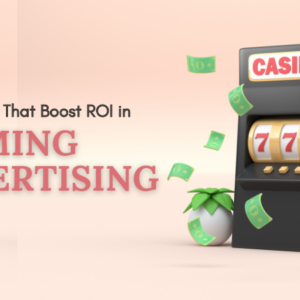When advertisers talk about Singles ads, most think of eye-catching creatives, witty taglines, or irresistible offers. But here’s the quiet truth that separates top-performing campaigns from the rest — audience segmentation. It’s not the loudest ad that wins attention; it’s the one that speaks directly to the right person at the right time.
According to eMarketer, nearly 68% of digital advertisers say precise audience targeting is their biggest ROI driver. And in dating promotions, segmentation is where the real conversions begin.
Let’s explore how smart segmentation can transform the way you run Singles ads and what practical steps help you reach people genuinely looking for a connection.
The Challenge: Why Generic Singles Ads Fail
Many advertisers believe that casting a wide net helps them reach more users. But when it comes to Singles ads, this “reach everyone” strategy backfires.
The dating audience is incredibly diverse — from people seeking long-term love to those looking for casual encounters or mature companionship. If your ad tries to appeal to all of them at once, it appeals to no one.
Here’s the pain point:
Generic messaging kills intent. When your ad doesn’t reflect the user’s relationship goals, lifestyle, or age group, the click-through rate drops sharply. Worse, you pay for impressions that never convert.
Advertisers often ask: “How can I make my Singles ads feel personal without managing a dozen campaigns?”
The answer lies in strategic segmentation — using data to group audiences by traits, intent, and engagement.
Why Audience Segmentation Matters in Singles Advertising
Segmentation lets advertisers customize their Online Singles ads to match the emotional and behavioral patterns of their audience. Instead of pushing one message to all, you can speak in a voice each segment recognizes.
Think about it like hosting a mixer. You wouldn’t greet everyone with the same opening line. You’d adjust your tone depending on whether the person seems adventurous, shy, or confident. The same principle applies to Singles ads — segmentation helps you adapt your messaging to fit the user’s mindset.
When done right, segmentation increases:
- CTR (Click-Through Rate): Relevant ads naturally get more engagement.
- Conversions: Users respond faster when the ad fits their intent.
- Ad Efficiency: You spend less money showing irrelevant ads.
That’s why even experienced advertisers are now fine-tuning their dating campaigns using structured audience groups.
Breaking Down Audience Segmentation for Singles Ads
Here’s how advertisers can approach segmentation in a structured way — keeping it simple, actionable, and ROI-focused.
Demographic Segmentation
Start with age, gender, and location. Singles in their 20s may engage with vibrant, social imagery, while mature audiences respond better to confident, subtle tones.
For instance, if you’re promoting a mature dating site, use visuals that reflect sophistication and real-world experiences rather than youthful energy.
Tip: Run A/B tests to discover which tone resonates with each demographic. Over time, use this data to adjust bids and budgets accordingly.
Interest-Based Segmentation
Go beyond age and gender — focus on interests. Many Singles Ad Networks now allow targeting based on hobbies, lifestyle, and behavior.
For example:
- Fitness lovers might respond to ads featuring active, outdoor themes.
- Book or movie enthusiasts may prefer introspective or cozy visuals.
- Music or event-goers might connect with social, nightlife-oriented creatives.
The more you understand what excites your users, the easier it becomes to make your Singles ad platform feel personalized.
Intent Segmentation
Not all singles are looking for the same thing. Some want serious relationships; others prefer casual chats or short-term connections. Segmenting by dating intent makes your ads more relevant and reduces wasted spend.
For example:
- Use phrases like “Find genuine connections” for relationship-focused audiences.
- Use “Meet fun singles near you” for casual users.
Pairing this with optimized landing pages can double engagement rates since users land on content that matches their intent.
Device & Timing Segmentation
Singles often browse differently depending on the time of day and device. Mobile users tend to engage during commutes or late at night, while desktop users might explore during lunch breaks.
By analyzing device data, you can:
- Increase bids during peak hours for higher visibility.
- Adjust creatives for mobile-first experiences.
- Schedule campaigns when engagement is historically strongest.
Even subtle timing tweaks can lift your overall CTR by 15–20%.
Your Secret Weapon in Audience Segmentation
Segmentation is only as strong as your data. The good news is, you don’t need a massive tech stack to use it effectively.
Leverage metrics like:
- Click and impression histories.
- Ad-to-landing page conversion ratios.
- Audience dwell time.
- Location-based engagement.
By analyzing who’s clicking and converting, you can build a more predictable and profitable Singles ad funnel.
If you’re looking for inspiration on how pros do it, explore Strategies for Online Singles Ads. It’s a helpful read for advertisers looking to improve both targeting and reach.
Creating Segments That Actually Convert
Now that we’ve covered the theory, here’s how to make segmentation work in practice.
Define Clear Personas
Start by building 3–5 audience personas based on your data. For example:
- Young Professionals (25–34): Career-oriented, mobile-first, prefer witty, fast-moving ads.
- Mature Daters (45+): Value authenticity, prefer calm, elegant visuals.
- Casual Connectors (18–30): Seek excitement, respond to trendy, vibrant designs.
Once you define them, tailor ad sets for each persona with distinct tone, visuals, and CTA language.
Align Your Message with User Goals
Avoid pushing one-size-fits-all messages. Each ad should match the user’s why.
Ask:
- What do they hope to find?
- What emotions drive their decision?
- What’s stopping them from clicking right now?
When your copy answers those questions, your ad instantly feels more relevant — and relevance always wins.
Personalize Without Overcomplicating
Segmentation doesn’t mean dozens of campaigns. You can start small — 2 or 3 segmented groups with distinct creatives and headlines.
Track early performance, pause underperformers, and expand the best ones. Over time, this refinement loop makes your Online Singles ads more efficient and scalable.
Sync Segments Across Channels
Consistency matters. If you run Singles ads on multiple platforms, ensure your tone and targeting stay aligned.
Example:
A user who clicks a mobile banner for “serious dating” shouldn’t land on a page offering casual chats. That mismatch breaks trust instantly.
That’s why advertisers prefer working with a unified Singles ad platform where audience data, creatives, and performance metrics stay connected.
You can explore one such trusted category here — Singles ads — to understand how leading networks structure targeting for dating advertisers.
Avoiding Common Segmentation Mistakes
Even seasoned advertisers can fall into traps when over-segmenting or ignoring campaign data. Here’s what to watch out for:
- Too Many Segments: Splitting your audience into too many micro-groups can dilute your budget and skew results. Start broad, then refine.
- Ignoring User Feedback: Comments, likes, and replies reveal how audiences feel. Use that feedback to adjust messaging.
- Neglecting Creative Sync: Your ad, headline, and landing page must speak the same “language.” Inconsistent tone kills conversion.
- Not Testing Enough: Segmentation isn’t static. As dating trends shift, your targeting should too. Revisit segments quarterly.
The Human Side of Segmentation
Beyond data and analytics, segmentation is about understanding people. Singles browsing online aren’t just looking for faces — they’re looking for feelings: connection, validation, companionship.
Your role as an advertiser is to reflect those emotions authentically. When your Singles ads sound human — not algorithmic — your audience feels seen. That’s what drives clicks that convert into meaningful results.
Smarter Segmentation, Stronger ROI
When done right, audience segmentation in dating campaigns can reduce ad waste by up to 30% and boost conversion rates by 2x. That’s because every impression starts serving a purpose — reaching users who actually care.
Segmentation isn’t a trick. It’s a mindset shift from volume to precision. And once advertisers embrace that, their results often surprise them.
If you’re ready to take your next step, you can create an ad campaign designed around smart audience targeting and authentic engagement.
Conclusion
Segmentation isn’t about dividing audiences — it’s about connecting more meaningfully. The best Singles ads aren’t just well-designed; they’re well-aimed.
By understanding who you’re speaking to and tailoring your message to fit their intent, you transform your ads from noise into conversation.
In a world where every click counts, smarter segmentation isn’t optional — it’s the key to making every impression matter.


